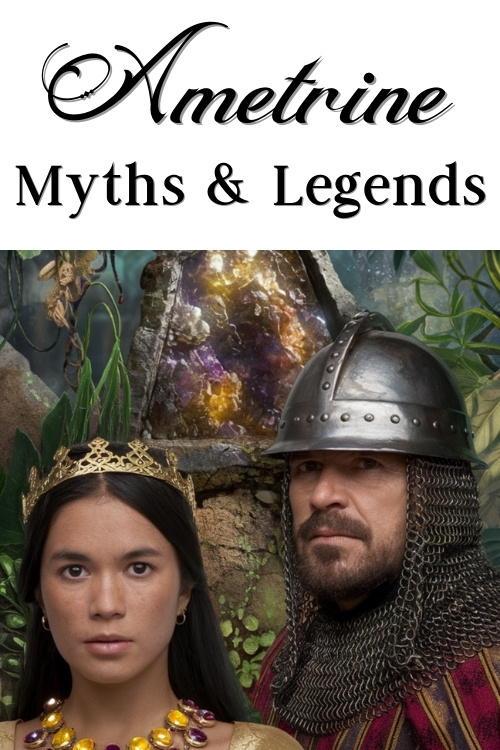When you think of gemstones steeped in myths and legends, your mind probably jumps to ancient times. Gods, enchanted stones, or at the very least, a sorcerer cursing someone into a rock. But when it comes to ametrine, the legend list is… well, short. And by short, I mean there’s basically one.
But don’t worry, what ametrine lacks in ancient folklore, it makes up for with a fascinating history. An epic love story, and a colour combination that looks like a sunset captured in crystal. Let’s dive into the one, the only, the legend of Princess Anahí.
🔗This ancient story often influences how we view ametrine today, from spiritual qualities to symbolic associations. Discover the full range of Ametrine’s meanings here
The Legend of Princess Anahí
Our story takes us to 17th-century Bolivia, home to the world’s only commercially viable source of natural ametrine. The Ayoreo people lived in the region, and among them was the beautiful and kind-hearted Princess Anahí. As fate would have it, a Spanish conquistador arrived and fell madly in love with her.
Whether Anahí loved him back or was just playing along for survival is unclear. What we do know is that she gave him a gemstone unlike any he’d ever seen, half purple, half yellow. This gem, with its two colours blending seamlessly, was said to symbolise their two worlds coming together.
Tragically, as is the case in most dramatic gemstone-origin stories, things didn’t end well. Anahí’s people weren’t thrilled with the Spanish invasion (which seems reasonable to me). This lead to conflict, during which the princess was mortally wounded.
Some versions of the story say that with her dying breath, she revealed the location of the mine. Others say the gemstone and the mines location were part of her dowry. A gift of love and unity between two worlds. Either way, the Spanish conquistador took the gemstones back to Spain, and presented them to his Queen. They were a marvel of the New World.
Romantic? Absolutely. Historically verified? Not so much. There’s no real evidence that Anahí existed or that she married a Spanish conquistador. But this hasn’t prevented the story from enduring as a beautiful piece of gemstone lore.
Why Aren’t There More Ametrine Myths?
Unlike other stones that have been know about for thousands of years, ametrine remained a hidden gem for most of history. No Greek gods turning people into ametrine, no ancient Chinese emperors hoarding it, just one legendary princess and a very exclusive mine.
Ametrine’s beautiful fusion wasn’t widely recognised until the 1970s, when commercial mining finally took off. While small deposits have been found in places like Brazil and India, they aren’t commercially viable. The only significant source of gem-quality ametrine remains the Anahí mine in Bolivia.
The Modern Magic of Ametrine
And yet, what ametrine lacks in ancient stories, it makes up for in modern meaning. Jewel-coloured and striking, it seems almost designed to embody balance. Amethyst brings calm, spirituality, and intuition. Citrine adds warmth, energy, and clarity. Together, they create a gemstone that whispers of harmony and duality, of opposites not clashing but blending.
Some wear it for energy, others for symbolism, and many simply because it’s breathtaking. Perhaps that’s the real magic: even without a pantheon of myths, ametrine feels timeless, like a gemstone that tells its own story just by being seen.
🔗If you’re working with ametrine in jewellery, take a look at my Jewellers Guide to Ametrine, where I cover identification tips, common treatments, setting considerations and more.
📌 Save this ametrine myths and legends post so you can find it again. It also makes great marketing content, so feel free to re-tell this story!


